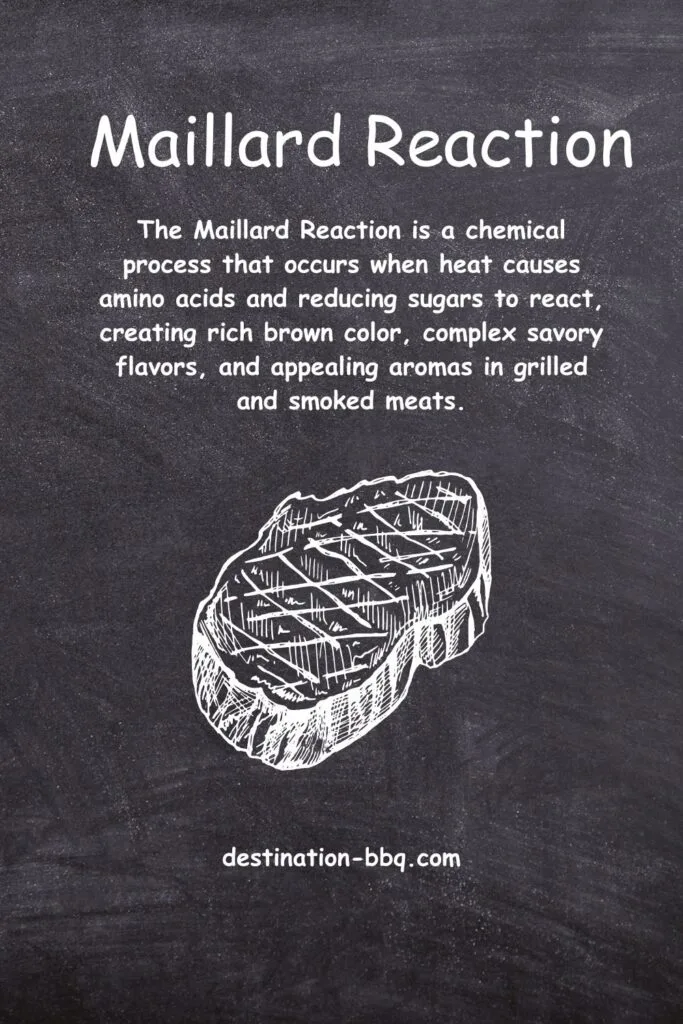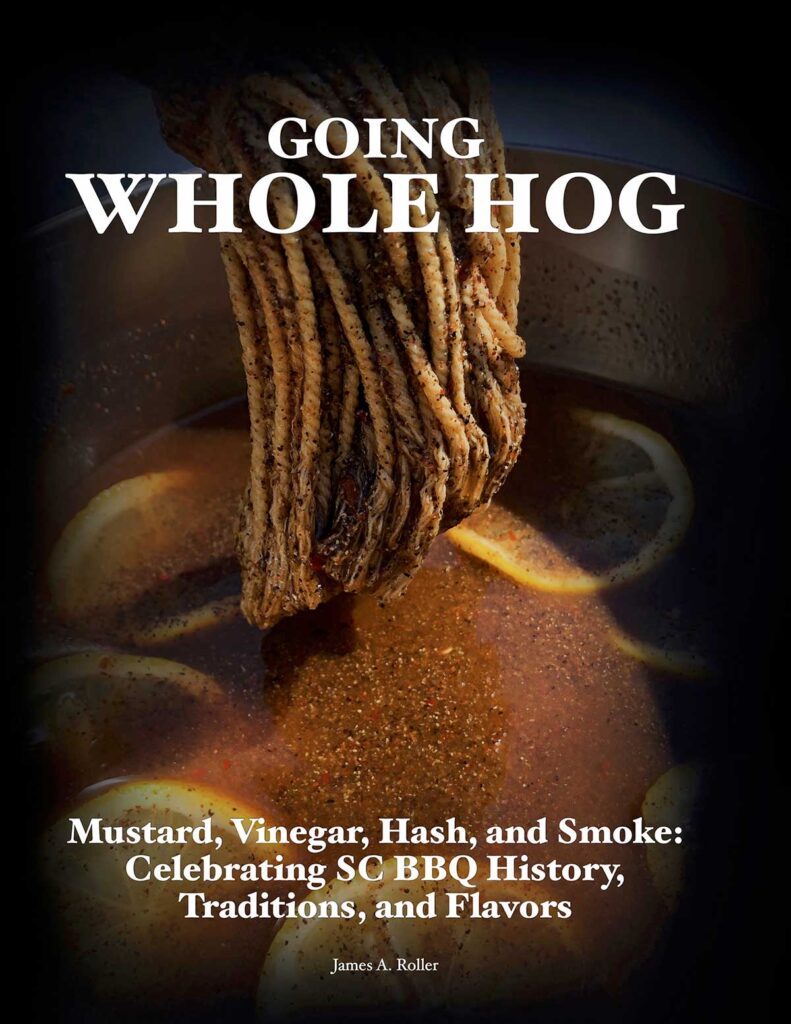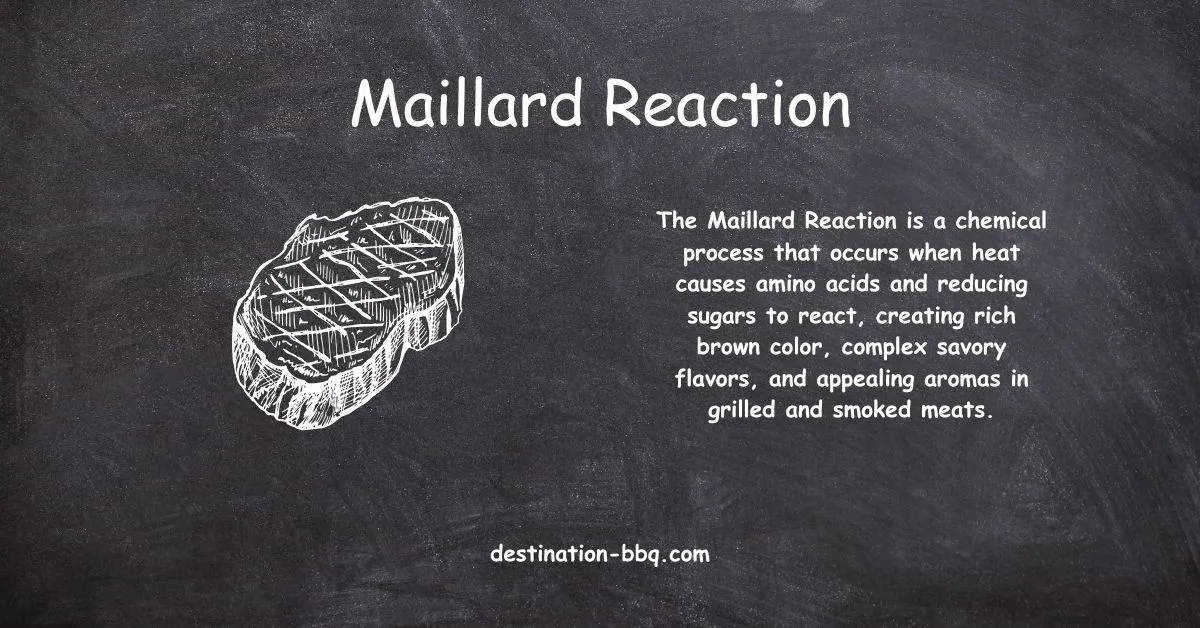
What is the Maillard Reaction?
The Maillard Reaction is a chemical process where heat causes amino acids and sugars to react, creating new flavor compounds and the signature brown crust on grilled and smoked meats. This reaction is key to BBQ’s deep, savory flavors. By controlling heat, moisture, and cooking time, pitmasters enhance the Maillard Reaction to maximize flavor and texture.
Key Takeaways
- The Maillard Reaction is the foundation of BBQ’s rich flavor—it occurs when heat causes amino acids and reducing sugars to react, creating the browned crust and deep, savory notes that define great grilled and smoked meats.
- Temperature and moisture control are key. The Maillard Reaction begins around 285°F and intensifies at higher temperatures, but excess surface moisture slows browning by causing steaming instead of searing.
- Pitmasters optimize the Maillard Reaction by dry brining, patting meat dry before cooking, and fully preheating grills or smokers—ensuring the best flavor, texture, and bark formation.

“The Maillard reaction is one of the great miracles of cooking, named after the French scientist Louis-Camille Maillard, who studied the browning of foods in the early 1900s.”
Meathead Goldwyn, author, BBQ expert and founder of AmazingRibs.com
Understanding the Maillard Reaction
First identified by French chemist Louis-Camille Maillard in 1912, the Maillard Reaction is the process that gives BBQ its deep, rich flavors and signature crust. When amino acids react with reducing sugars under heat, they create hundreds of new compounds responsible for the browned exterior, savory aroma, and mouthwatering taste of grilled and smoked meats.
This reaction differs from caramelization, which only involves sugar breakdown. In BBQ, the Maillard Reaction is critical for developing bark on brisket, a flavorful crust on steaks, and the deep mahogany hue of smoked ribs.
In Texas-style brisket, the Maillard Reaction plays a crucial role in developing the thick, flavorful bark. As the meat smokes over hours, surface moisture evaporates, rub ingredients combine with rendered fat, and heat triggers browning reactions that create the deep mahogany crust BBQ lovers crave. On the other hand, in South Carolina-style whole hog BBQ, the Maillard Reaction is more evident in crispy skin (‘cracklin’) rather than in bark formation, due to different cooking techniques.
Smoke plays an indirect role in the Maillard Reaction by helping dry the meat’s surface and delivering additional compounds that interact with browning reactions. Woods like hickory and oak provide phenols and carbonyl compounds that combine with Maillard products, deepening the rich, smoky complexity of barbecue. This is why different woods result in subtly different bark flavors.
What Affects the Maillard Reaction in BBQ?
To get that perfect crust and robust flavor, several factors come into play:
- pH Levels – Alkaline environments (higher pH) accelerate browning. Some pitmasters use baking soda in rubs to enhance this effect.
- Moisture Content – A dry surface is key. Too much moisture lowers surface temperature, preventing browning and causing steaming instead.
- Time & Temperature – Higher temperatures speed up the reaction, but low-and-slow BBQ still allows it to occur over extended cooking times, especially as meat dries out.
A higher pH speeds up the Maillard Reaction, leading to faster and darker browning. Some pitmasters take advantage of this by using alkaline ingredients like baking soda or dry-aging meats to increase surface pH. Conversely, acidic marinades—such as vinegar-based sauces in Carolina BBQ—can slow the reaction, leading to lighter color but different layers of flavor.
Hot and fast grilling, like in steaks and burgers, produces a rapid Maillard Reaction, forming a deep sear in minutes. In contrast, slow-smoking brisket or pork shoulder allows a more gradual reaction over hours, leading to bark formation rather than a quick crust. Reverse-searing—a method popular in BBQ competitions—maximizes the Maillard Reaction by smoking meat at low temps first, then finishing with a high-heat sear.
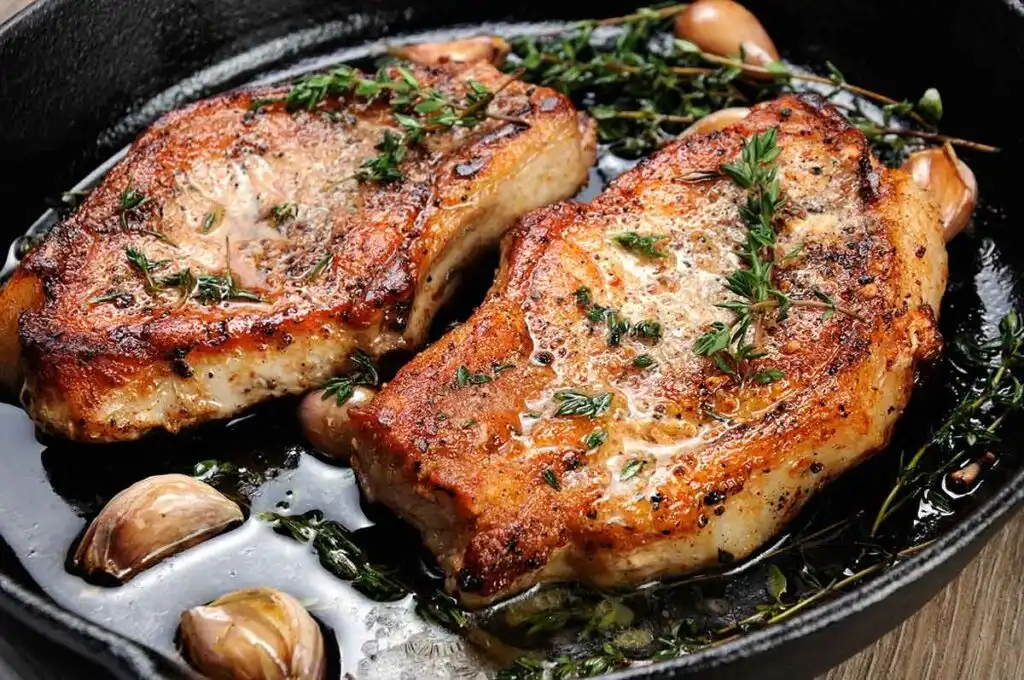
How to Maximize the Maillard Reaction in BBQ
- Control Temperature – Searing meat at high heat or finishing BBQ with a high-heat step intensifies the reaction.
- Keep Meat Dry – Patting meat dry before cooking ensures a crisp, well-browned crust.
- Use the Right Rubs & Marinades – Ingredients like soy sauce, Worcestershire sauce, and sugars in rubs help fuel the Maillard Reaction.
- Don’t Overcrowd the Grill – Too much meat in one space leads to trapped steam, reducing browning.
Pro Tip: For the best Maillard reaction on ribs or pork shoulder, try a dry brine. Salting the meat several hours before cooking draws out moisture, which then reabsorbs. Brine, uncovered, in the fridge, creating a drier surface for better browning. Pat dry if needed. This enhances crust formation while also improving seasoning penetration.
Common BBQ Mistakes That Kill Flavor
- Skipping the Preheat – Meat needs an already-hot surface to brown properly.
- Cooking Wet Meat – Excess surface moisture leads to steaming instead of searing.
- Underseasoning – A good rub contributes to both flavor and the chemical reactions that enhance browning.
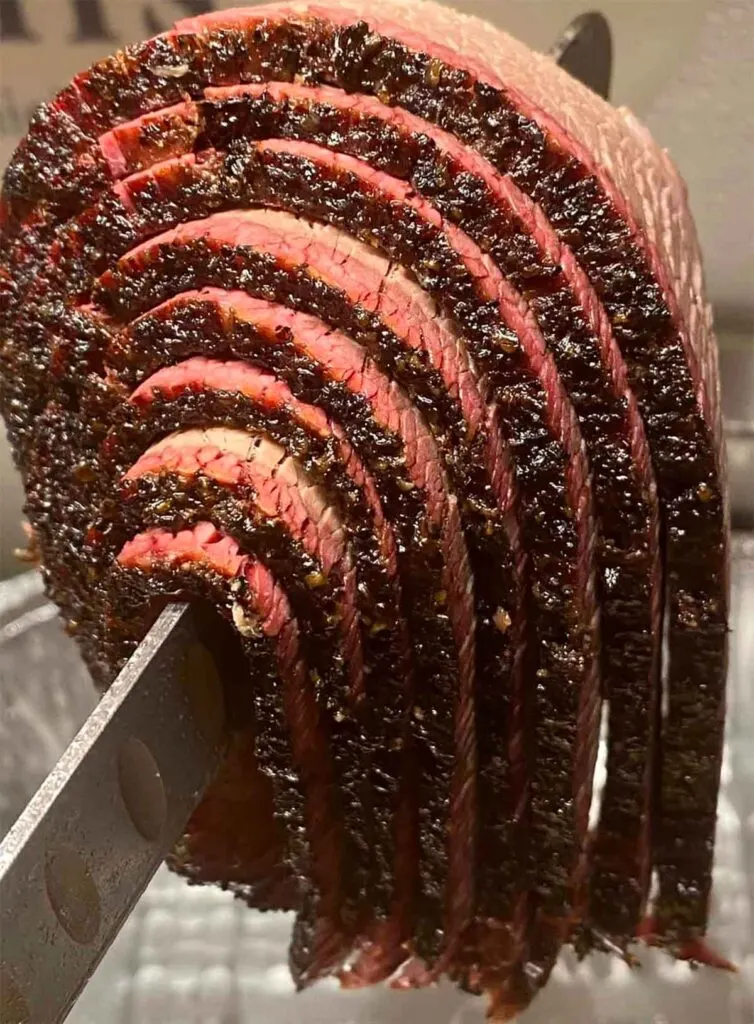
Expert Insights
The Maillard Reaction doesn’t just brown meat—it creates a complex web of flavor compounds that define the taste of perfectly smoked barbecue. Among these, three key types of compounds contribute to the deep, layered flavors in smoked pork shoulder, brisket, and ribs:
- Pyrazines – Responsible for nutty and roasted notes, pyrazines form during high-heat cooking and are commonly found in roasted meats and coffee. These compounds add depth to bark formation and seared crusts. (Source)
- Thiophenes – These sulfur-containing compounds contribute to the meaty, umami-rich flavors that make slow-smoked pork and beef so savory. (Source)
- Furans – Lending a caramelized sweetness, furans develop as a result of thermal processing, enhancing BBQ’s balance of smoky and sweet flavors. (Source)
The combination of these and other Maillard byproducts explains why smoked meats develop such rich and complex flavors. Cooking variables—such as temperature, time, rub composition, and the type of wood used for smoking—all influence the formation of these compounds, leading to the diverse flavor profiles found in different regional BBQ styles.
Food scientist Kantha Shelke explains that “the Maillard reaction produces complex, savory flavors, while caramelization yields a sweeter, caramel-like taste.” This distinction is particularly important in BBQ, where balancing these reactions can enhance the depth of flavor.
Harold McGee, in his book On Food and Cooking, notes that the Maillard Reaction is responsible for the “rich bouquet of flavors” in browned foods, emphasizing its significance in culinary applications beyond barbecue.
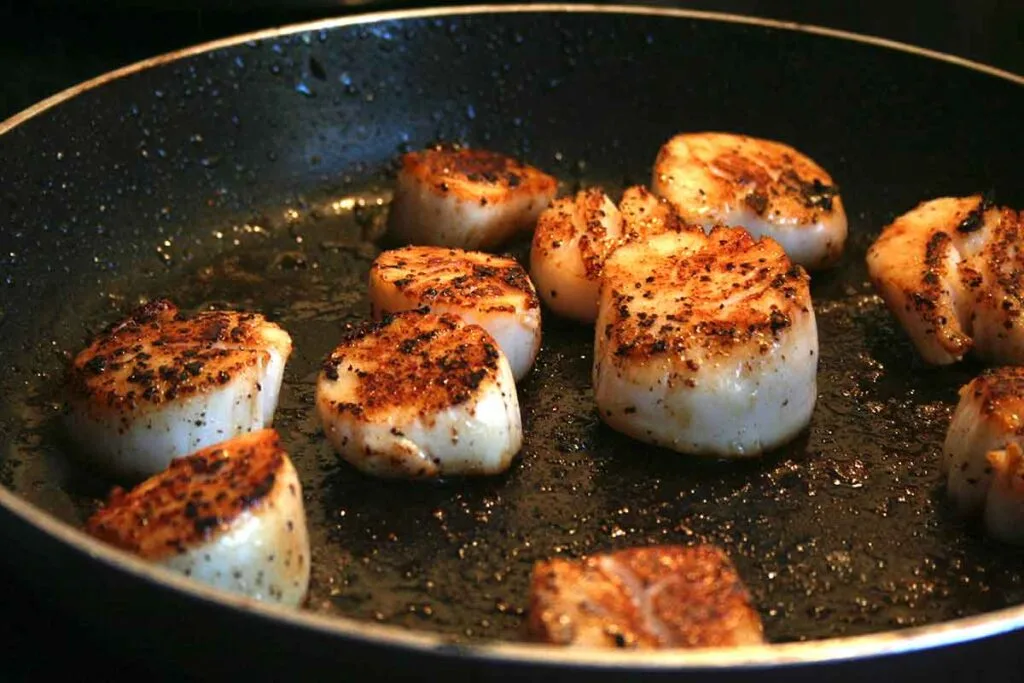
Maillard Reaction FAQ
The Maillard Reaction itself is not inherently unhealthy nor is it carcinogenic; it is a natural process that enhances flavor and texture in food. However, when foods are cooked at excessively high temperatures, certain compounds such as acrylamides and heterocyclic amines (HCAs) can form, which have been linked to potential health risks.
The Maillard Reaction begins at approximately 285°F (140°C) and intensifies as temperatures rise above 300°F (150°C). Higher heat speeds up the reaction, but excessive temperatures can lead to burning instead of browning.
While both processes involve browning, the Maillard Reaction occurs between proteins (amino acids) and sugars, creating a wide range of savory, umami flavors. Caramelization, on the other hand, happens when sugars break down under heat, resulting in a sweeter, nuttier taste.
“Maillard” is pronounced “My-YAR” (similar to “my yard”) in French, though some English speakers may pronounce it as “MAY-yard” or “MAL-yard.” The correct pronunciation honors the name of the French chemist Louis-Camille Maillard, who first studied this reaction.
